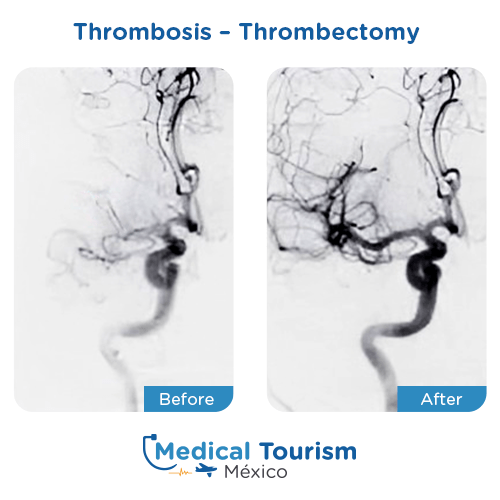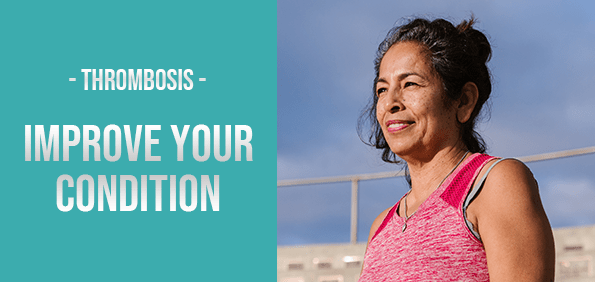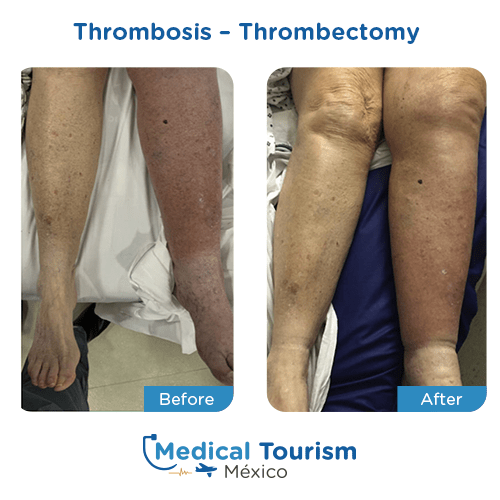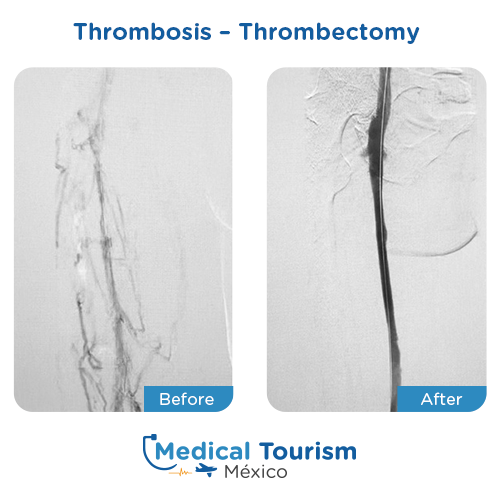The most reliable doctors in Mexico
Thrombosis - Thrombectomy information and locations in Mexico
Thrombosis is the formation of one or more blood clots inside the vessels. It is possible to dissolve the clot with medicine, physically remove the clot with catheter-based procedures, or a combination of the two.
Thrombosis is a serious condition and can result in life-threatening conditions, such as stroke or a heart attack. Thrombectomy is a surgical procedure that involves the removal of a blood clot, also known as a thrombus, from a blood vessel. A catheter is introduced into the afflicted blood artery during the surgery, and a specialized instrument is used to break up or remove the clot. This restores blood flow and can help avoid additional damage to the afflicted organ or tissue.
Types of thrombosis
Arterial thrombosis
Arterial thrombosis is when a blood clot forms in an artery, and is the most common cause of hearth attacks and strokes.
Venous thrombosis
Venous thrombosis is when a blood clot forms in a vein and it is the most common cause of blood clots in the lung (pulmonary embolism)
Schedule a consultation for thrombosis treatment with the best vascular surgeons in Mexico!
Benefits
Faster recovery
Enhanced blood flow
Reduced risk of complications
Reduced need for blood thinners
Enhanced blood flow
Reduced risk of complications
Reduced need for blood thinners
Thrombosis
Procedure:
4 hrs.
Hospital stay: 2 - 6 hrs.
Cleared to fly: 2 - 3 days
Hospital stay: 2 - 6 hrs.
Cleared to fly: 2 - 3 days
After surgery
Out of town patients’ follow-ups are scheduled face-to-face with any specialist following the procedure. Patients are clear for flying after 2 - 3 days from the thrombectomy.
Note: Follow-ups can be arranged as face-to-face or virtually. If needed, you can go to your primary care physician to remove sutures or get medication adjustments.
As an Amazon Associate, we earn from qualifying purchases.
Take a look at one of our medical tourism essentials for vascular surgery.
Take a look at one of our medical tourism essentials for vascular surgery.
Before and after images
View additional images for this procedure.

View more


Locations
Select the city of your choice to seethe doctors profile.
Chihuahua, Chih.
Dra. Angélica Calderón
View more

Thrombosis frequent questions
Get answers to our most frequently asked questions and what to expect after the surgery.
What are the risks of a thrombectomy?
Like any medical procedure, there are risks involved with thrombectomy. These include bleeding, infection, damage to the blood vessel, and allergic reactions to medication.
Am I a candidate for a thrombectomy?
A thrombectomy is typically recommended for people who have a blood clot that is causing severe symptoms or damage to an organ or tissue. It is often used to treat stroke, deep vein thrombosis (DVT), or pulmonary embolism.
What is the recovery time after a thrombectomy?
Recovery time after a thrombectomy will depend on the individual case, but most people are able to resume normal activities within a few days to a week after the procedure. Follow-up care with a healthcare provider will be necessary to monitor for any potential complications.
How effective is a thrombectomy?
Thrombectomy has been shown to be effective in restoring blood flow and reducing the risk of complications associated with blood clots. The success rate will depend on factors such as the location and size of the clot, as well as the individual's overall health.
Recent news
Article

Disclaimer: This information does not reflect the medical advice from our clinics. All cases are different and this treatment may not suit you. Always refer to a medical professional with the certification and experience. All of our physicians are fully qualified to perform these procedures. For more information and diagnosis contact one of our top specialized clinics.
In all medical procedures, there are chances of complications, the specialist will provide you detailed information about the risks of the procedure, talk to the specialist directly.
In all medical procedures, there are chances of complications, the specialist will provide you detailed information about the risks of the procedure, talk to the specialist directly.







